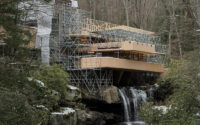- Home
- Articles
- Architectural Portfolio
- Architectral Presentation
- Inspirational Stories
- Architecture News
- Visualization
- BIM Industry
- Facade Design
- Parametric Design
- Career
- Landscape Architecture
- Construction
- Artificial Intelligence
- Sketching
- Design Softwares
- Diagrams
- Writing
- Architectural Tips
- Sustainability
- Courses
- Concept
- Technology
- History & Heritage
- Future of Architecture
- Guides & How-To
- Art & Culture
- Projects
- Interior Design
- Competitions
- Jobs
- Store
- Tools
- More
- Home
- Articles
- Architectural Portfolio
- Architectral Presentation
- Inspirational Stories
- Architecture News
- Visualization
- BIM Industry
- Facade Design
- Parametric Design
- Career
- Landscape Architecture
- Construction
- Artificial Intelligence
- Sketching
- Design Softwares
- Diagrams
- Writing
- Architectural Tips
- Sustainability
- Courses
- Concept
- Technology
- History & Heritage
- Future of Architecture
- Guides & How-To
- Art & Culture
- Projects
- Interior Design
- Competitions
- Jobs
- Store
- Tools
- More
How to Spot Early Foundation Issues During Routine Property Inspections

Foundations are built to last for decades, but even the best construction can develop small issues that’ll turn into expensive nightmares if you don’t catch them early. The tricky part is that foundation problems often start subtle and gradually get worse over months or years.
Routine home checks give you the perfect opportunity to spot warning signs before they morph into those wallet-draining disasters that require major reconstruction work. Catching cracks, moisture problems, or uneven floors during regular inspections can literally save you thousands in future repair bills and protect your family’s safety.
Foundation issues don’t just affect residential properties either, businesses dealing with commercial foundation repair face the same challenges on a larger scale, making proactive monitoring essential for avoiding major operational disruptions. Whether you’re protecting your home or business, knowing the most common early warning signs, where to look during routine checks, and when it’s time to bring in professional expertise helps you stay ahead of expensive structural problems.
Table of Contents
ToggleInspecting Interior Walls and Floors
Hairline cracks in drywall might seem harmless, but cracks wider than a quarter or those that keep expanding over time often signal foundation movement that needs attention. Look for cracks near doorways, windows, and corners where structural stress concentrates as your foundation shifts.

Uneven or sloping floors are dead giveaways that your foundation isn’t providing consistent support throughout your home. Use a marble or level to check suspicious areas, and pay attention to rooms where furniture rocks or doors swing open by themselves.
Gaps appearing where walls meet ceilings indicate your house is literally pulling apart as different sections settle at different rates. These separations might start tiny but tend to widen over time as foundation movement continues beneath your home.
Checking Doors and Windows
Doors that suddenly start sticking or won’t close properly often signal foundation movement that’s knocked door frames out of square. This is especially concerning when doors that worked fine for years suddenly become difficult to operate during certain seasons.
Windows that no longer open or close smoothly indicate frame distortion caused by foundation settling or shifting. Pay attention to windows that require force to operate or leave gaps when supposedly closed, as these problems affect both security and energy efficiency.
Frames separating from walls around doors and windows show that foundation movement is affecting your home’s structural envelope. These gaps let in drafts, moisture, and pests while signaling ongoing structural changes that need professional evaluation.

Looking for Exterior Warning Signs
Cracks in brickwork, siding, or exterior walls often reflect foundation problems happening beneath the surface. Stair-step cracks in brick are particularly concerning because they follow mortar lines and indicate differential settling that’s affecting your home’s structural integrity.
Separation between your chimney and house suggests serious foundation movement since chimneys are heavy structures that settle differently than the main house. This type of separation can create dangerous conditions and needs immediate professional attention.
Soil pulling away from your foundation creates gaps where water can collect and cause additional problems during the next heavy rain. This separation often indicates soil movement that’s affecting foundation support and needs investigation.
Monitoring the Basement or Crawl Space
Dampness, active leaks, or persistent musty odors in basements signal moisture problems that often accompany foundation cracks or failures in waterproofing systems. These conditions create perfect environments for mold growth that affects your home’s air quality.
Bowing basement walls or new floor cracks indicate serious foundation stress that requires immediate professional evaluation. These symptoms suggest your foundation is struggling against soil pressure or moisture forces that exceed its design capacity.
Rust developing on appliances, structural supports, or stored items indicates higher-than-normal humidity levels that often accompany foundation moisture problems. Your basement environment shouldn’t be creating corrosion issues if foundation and moisture control systems are working properly.

When to Call a Professional
Repeated or widening cracks that keep growing despite your attempts to monitor or seal them indicate active foundation movement that needs expert diagnosis and repair. Don’t ignore cracks that seem to have a life of their own.
Persistent water intrusion that continues despite your drainage improvements suggests foundation problems that require specialized waterproofing solutions integrated with structural repairs. Surface fixes rarely solve foundation-related water problems permanently.
Uneven settling affecting multiple areas of your home indicates widespread foundation issues that need comprehensive professional assessment and repair planning. This type of damage requires expertise to address safely and effectively without creating additional problems.
Conclusion
Routine checks for interior cracks, sticking doors, exterior separations, and basement moisture issues can reveal foundation problems while they’re still manageable and affordable to fix. These regular inspections are your early warning system against expensive structural disasters.
Catching foundation issues early prevents the kind of costly, invasive reconstruction work that can disrupt your life for months while draining your savings account. Small problems addressed quickly stay small, while ignored issues inevitably become major structural emergencies.
Homeowners who stay proactive about foundation monitoring protect both their property values and their families’ safety while avoiding the stress and expense of emergency foundation repairs. A few minutes spent checking your home regularly can save thousands in repair costs later.
illustrarch is your daily dose of architecture. Leading community designed for all lovers of illustration and #drawing.
Submit your architectural projects
Follow these steps for submission your project. Submission FormLatest Posts
Best LED Shop Lights 2026: Brightest Options for Garage & Workshop
In 2026, LED shop lights have become essential for creating safe, efficient,...
Coloring Your Year: Using Traditional Lunar New Year Hues to Transform Your Apartment Décor
Lunar New Year always brings a burst of color and energy, making...
Chandelier Light vs Ceiling Lights: Which Decorative Lighting Works Best for UAE Homes in Winter?
Winter in the UAE doesn’t arrive loudly. It doesn’t announce itself with...
Marketing for Architects: How Firms Are Getting More Clients Without Chasing Leads
Architectural marketing has changed in important ways. Referrals and reputation still matter,...












Leave a comment